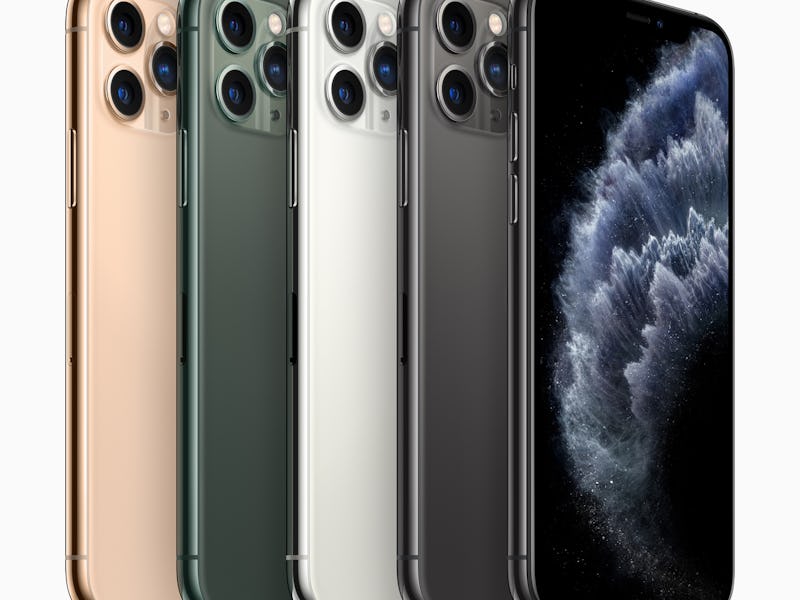iPhone 11 Pro: How to Get Apple’s Latest Smartphone if You Miss Pre-Orders
Apple's next smartphone is about to reach stores.

The iPhone 11 is almost here. Apple’s smartphone, unveiled at a special event on Tuesday, is set to ship out to consumers later this month.
For the lucky pre-order customers, big upgrades await. The $699 iPhone 11 offers an ultrawide camera lens alongside the standard lens, an A13 Bionic processor that offers a faster CPU and GPU than any other smartphone, and support for new technologies like ultra wideband and Wi-Fi 6. The $999 iPhone 11 Pro and $1,099 Pro Max upgrade this with a third telephoto lens and an OLED screen capable of displaying deeper-than-ever blacks.
It’s a big moment for iPhones, but also for the world of computing. Last month, Apple products accounted for 22 percent of the global mobile devices in use around the world. iOS, the iPhone’s operating system, is used on 14 percent of all computing devices, in a world otherwise dominated by Android and Windows.
As the smartphone that brought smartphones to the mainstream enters its 13th year — paired with the iOS 13 software update — fans are planning how to pre-order and buy at the launch date.
The front of the iPhone 11.
iPhone 11: When Does It Go On Sale?
It already went on pre-order! The iPhone 11 opened up for pre-orders on September 13 at 5 a.m. Pacific time in more than 30 countries and territories. At this time, Apple started accepting pre-orders for the iPhone 11, iPhone 11 Pro, and iPhone 11 Pro Max. Customers can place their order through Apple’s website.
iPhone 11: How Can I Buy It If I Missed Pre-Orders?
If you’ve checked the website and Apple is not accepting orders for your chosen phone, there is an alternative.
Apple normally stocks a limited number of iPhones on the actual launch day, which leads to the sight of people lining up in the cold light of morning to buy Apple’s latest gadgets. When the iPhone X went on sale in November 2017, it left some fans facing particularly bitter cold winds.
Fortunately, the iPhone 11 is set to go on sale this year on September 20. Fans that miss the pre-order window can camp outside and try their luck at the opening time. Apple typically organizes the line outside stores.
Getting the first spot in line is not for the faint of heart. Adam Rabi, a 23-year-old graduate, was the first in line at London’s Regent Street iPhone X launch in 2017. He told Inverse that he had waited in line for three nights: “I had a tent, I had a sleeping bag…to eat, just left my tent or seat, two minutes walk, quickly, ran back.”
Of course, there’s always the option of waiting until the initial hype dies down and walking into a store at a later date. It’s unclear when you may be able to do this though, as in previous years some models have proven particularly difficult to purchase weeks and months after launch.
Apple iPhone 11 Pro
iPhone 11: Should I Wait for the 2020 Model?
Another option is indeed to just hold off, avoid the hype, and wait for next year’s launch. That might be a smart move if you’re interested in features like 5G or a smaller phone design.
Reports suggest that Apple will launch a 4.7-inch iPhone in the first half of next year. The device is seen as a successor to the iPhone SE, the 4-inch smartphone that started at $399 when it launched in the spring of 2016. Unlike the SE that used the iPhone 5 and 5S as its base, the phone is expected to use a design similar to the iPhone 6, 6S, 7 and 8.
Could an iPhone 6-like phone make a return?
Apple’s next flagship smartphone could tout 5G connectivity, high-end OLED screens across the range, and a laser-touting 3D camera. Some reports even suggest Apple could finally ditch the Lightning connector and switch to USB-C, the same charger used for the MacBook and iPad Pro.
Perhaps the biggest change expected from the 2020 devices are the new screen sizes. The smallest 5.8-inch screen phone is rumored to shrink down to 5.4-inch, as the 6.1-inch phone stays the same and the 6.5-inch grows to 6.7 inches. As the lineup moves to offering OLED across the board instead of just on the two high-end models, the changes could offer greater differentiation between products.